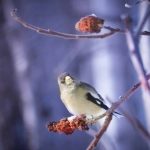Spring transforms the UK into a vibrant haven for birdwatching enthusiasts. From the bustling wetlands of Norfolk to the serene woodlands of Wales, unique locations offer a glimpse into the lives of migratory birds. Each site boasts its distinct charm, making it an exciting experience for both seasoned watchers and curious newcomers. Discover the best spots to witness nature's spectacle and deepen your appreciation for avian wonders this season.
Overview of Spring Birdwatching in the UK
Spring birdwatching in the UK is a captivating experience, offering a unique opportunity to observe a diverse array of bird species. As the season unfolds, it heralds the arrival of migratory birds returning from warmer climates. These birds, including swallows and warblers, add vibrant life to the British landscape, creating a dynamic environment for birdwatchers.
In the same genre : Where can you learn traditional UK basket weaving?
Understanding the migratory patterns is crucial for enthusiasts. Many species travel thousands of miles to breed in the UK, making spring a peak time for spotting rare and diverse species. This migration is not only a spectacle but also a vital part of the ecosystem, as birds contribute to pollination and pest control.
For those keen on birdwatching, here are some tips to enhance your experience:
Also read : Discover the Ultimate Guide to Securing Your Own Private Boat Tour on the Norfolk Broads
- Timing is key: Early mornings are ideal as birds are most active.
- Location matters: Coastal areas and nature reserves often host a variety of species.
- Equipment: A good pair of binoculars can greatly enhance your ability to observe birds closely.
Birdwatching in spring offers numerous benefits. It fosters a deeper connection with nature and contributes to conservation efforts by raising awareness about the importance of protecting bird habitats. Engaging in this hobby not only enriches personal knowledge but also supports broader ecological preservation.
Top Birdwatching Locations in England
Embark on a journey through the English countryside to discover prime birdwatching locations teeming with diverse bird species. Each site offers a unique spectacle for enthusiasts and casual observers alike.
The New Forest
The New Forest, a renowned birdwatching destination, is home to a variety of species, including the elusive Goshawk and the vibrant Wood Warbler. Its expansive woodlands and heathlands provide a perfect habitat for these birds. Visitors will find well-marked trails and accessible paths, making it easy to explore the area without disturbing the natural environment.
Norfolk Broads
Another top spot is the Norfolk Broads, famous for its wetland habitats. Here, you can spot the majestic Bittern and the striking Marsh Harrier. The Broads offer boat tours, allowing birdwatchers to navigate the waterways and reach secluded areas where these birds thrive. Accessibility is a priority, with facilities catering to a range of mobility needs.
Accessibility and Enjoyment
Each location is equipped with amenities to enhance your birdwatching experience. Whether you prefer walking or boating, both the New Forest and Norfolk Broads provide options to suit different preferences. By visiting these sites, you not only enjoy the beauty of the English countryside but also contribute to the conservation of these vital habitats.
Premier Birdwatching Spots in Scotland
Experience the allure of Scottish birdwatching as you explore some of the most breathtaking locations. Scotland's diverse landscapes provide ideal habitats for a variety of bird species, especially in spring.
Isle of Skye
The Isle of Skye is a must-visit for birdwatchers. This enchanting island offers stunning vistas and is home to unique coastal birds such as the White-tailed Eagle and the colourful Puffin. The island's rugged cliffs and serene shores create perfect conditions for these birds to thrive. Visitors can enjoy well-maintained paths and guided tours, ensuring a memorable experience without disrupting the wildlife.
Loch Lomond
Another exceptional spot is Loch Lomond, renowned for its tranquil beauty and rich birdlife. Here, you can spot species like the Osprey and the Goldeneye. The expansive waters and surrounding woodlands provide a haven for these birds. Loch Lomond offers a range of visitor facilities, including observation points and educational centres, enhancing the birdwatching experience.
Travel Tips
When planning your visit to these nature reserves, consider the following:
- Seasonal timing: Spring is ideal for observing migratory species.
- Accessibility: Both locations offer facilities catering to various mobility needs.
- Local guides: Enhance your experience with knowledgeable guides familiar with the area's birdlife.
Best Birdwatching Areas in Wales
Explore the enchanting landscapes of Welsh birdwatching in some of the UK's most picturesque settings. Wales offers an array of National Parks and diverse bird habitats that make it a paradise for birdwatchers.
Snowdonia
Snowdonia is a premier destination, boasting rugged mountains and serene lakes that provide a habitat for species like the Peregrine Falcon and Ring Ouzel. The park's varied terrain supports a rich diversity of birds, attracting enthusiasts year-round. Snowdonia hosts seasonal events, such as guided walks and birdwatching festivals, enhancing the experience with expert insights.
Pembrokeshire
Pembrokeshire, with its stunning coastline and islands, is another top spot. Here, birdwatchers can marvel at seabirds like the Manx Shearwater and Razorbill. The area's unique geography creates ideal conditions for these species to thrive. Seasonal events, including boat tours, offer unparalleled opportunities to observe these birds in their natural environment.
Accessibility and Local Guides
Both Snowdonia and Pembrokeshire provide excellent accessibility, with well-maintained paths and facilities catering to various mobility needs. Local guides are available to enrich your visit with their knowledge of bird habitats and seasonal events. This ensures a comprehensive and fulfilling birdwatching experience in the heart of Wales.
Key Birdwatching Sites in Northern Ireland
Northern Ireland offers some of the most captivating birdwatching experiences, with its rich wetlands and diverse habitats. Two standout locations are Lough Neagh and the Mourne Mountains, each providing unique opportunities to observe rare bird species.
Lough Neagh
As the largest freshwater lake in the UK, Lough Neagh is a haven for birdwatchers. Its vast wetlands attract a variety of species, including the Whooper Swan and the elusive Corncrake. The lake's expansive shores and marshes provide ideal conditions for these birds, especially during the migratory season. Birdwatchers can explore the area via well-maintained paths and observation points, which offer excellent vantage points for spotting birds without disturbing their natural habitat.
Mourne Mountains
The Mourne Mountains are another prime location, known for their rugged beauty and diverse birdlife. Here, enthusiasts can look for rare species like the Ring Ouzel and the Hen Harrier. The mountains' varied terrain, from heather moorlands to rocky outcrops, supports a wide range of avian life. Visitors are encouraged to use local maps and guides to navigate the trails safely, ensuring a rewarding birdwatching experience.
Tips for Navigating the Sites:
- Wear appropriate footwear for uneven terrain.
- Use binoculars for better visibility.
- Check local weather forecasts before your visit.
Seasonal Events for Birdwatchers
Spring in the UK is not just a time for observing birds but also for engaging in vibrant birdwatching events and spring festivals. These events offer enthusiasts the chance to deepen their understanding of birdlife through guided tours and interactive workshops.
Many birdwatching festivals are held during this season, providing unique opportunities to witness migratory patterns and learn from experts. Participants can join guided tours led by experienced birdwatchers, offering insights into the behaviour and habitats of various species. Workshops often focus on skills such as bird identification and photography, enhancing the overall birdwatching experience.
Community engagement is a crucial aspect of these events. By participating, individuals contribute to broader bird conservation efforts, raising awareness about the importance of preserving natural habitats. These gatherings foster a sense of community among birdwatchers, encouraging collaboration and knowledge sharing.
Spring festivals not only celebrate the arrival of migratory birds but also promote the significance of protecting these species. Through educational activities and community-led initiatives, participants are inspired to take active roles in conservation. Whether you're a seasoned birdwatcher or a newcomer, these events offer enriching experiences that support both personal growth and environmental stewardship.
Essential Birdwatching Gear and Equipment
Embarking on a birdwatching adventure requires the right birdwatching gear to enhance your experience. A crucial component is a reliable pair of binoculars. For beginners, an 8×42 model provides a good balance of magnification and field of view. Advanced enthusiasts might opt for 10×42 binoculars, offering greater detail at the cost of a narrower view. Scopes are also invaluable for long-distance viewing, especially in open areas like wetlands.
Photography enthusiasts should consider investing in photography equipment tailored for birdwatching. A DSLR or mirrorless camera with a telephoto lens, such as a 300mm or 400mm, is ideal for capturing detailed images of bird species. Tripods or monopods can help stabilise the camera, ensuring sharp images.
Field guides are indispensable tools, offering detailed information on bird species, their habitats, and behaviours. For tech-savvy birdwatchers, mobile apps can provide instant access to bird calls and identification features, making them a modern alternative to traditional guides.
Incorporating the right equipment not only enhances the birdwatching experience but also aids in accurate identification and documentation, fostering a deeper appreciation for the avian world.
Tips for Successful Birdwatching
Embarking on a birdwatching journey requires more than just enthusiasm; it demands a keen understanding of birdwatching tips and observation techniques. To truly appreciate the beauty of avian life, it's essential to adhere to best practices ensuring minimal disturbance to birds.
One of the primary birdwatching tips is to maintain a respectful distance. Use binoculars or scopes to observe without encroaching on a bird's space. This ensures birds remain undisturbed, allowing for natural behaviour observation. Additionally, wearing muted colours can help you blend into the environment, reducing the chances of startling birds.
Mastering observation techniques involves recognising bird calls and behaviours. Each species has unique vocalisations and actions, which can be key identifiers. Practising with audio guides or apps can enhance your ability to identify birds by sound, enriching your birdwatching experience.
Ethical practices are paramount. Avoid using playback calls, as they can stress birds or disrupt their natural activities. Instead, focus on patience and quiet observation. Remember, ethical birdwatching not only protects birds but also preserves the integrity of their habitats, ensuring future generations can enjoy these magnificent creatures. By integrating these practices, birdwatchers can foster a harmonious relationship with nature.
Resources for Birdwatchers
Embarking on a birdwatching journey is greatly enhanced by accessing a variety of birdwatching resources. Whether you're a novice or a seasoned enthusiast, these tools and communities offer invaluable support and information.
Online Communities provide a platform for birdwatchers to connect, share experiences, and exchange tips. Websites like BirdForum and platforms such as Facebook groups host vibrant discussions and offer advice on spotting rare species. Engaging with these communities can enrich your birdwatching knowledge and introduce you to like-minded individuals.
Field Guides are essential for identifying bird species and understanding their behaviours. Popular guides like the "Collins Bird Guide" offer comprehensive details on European birds, including illustrations and distribution maps. For those who prefer digital solutions, apps like Merlin Bird ID provide instant identification through photos and sounds, making it easier to learn on the go.
Local organizations such as the Royal Society for the Protection of Birds (RSPB) and the British Trust for Ornithology (BTO) support birdwatching through events, conservation projects, and educational resources. Joining these organizations not only enhances your birdwatching experience but also contributes to the preservation of avian habitats, ensuring these natural wonders endure for future generations.
Conclusion and Future Trends in Birdwatching
As birdwatching evolves, emerging birdwatching trends reflect both technological advancements and a growing emphasis on conservation. Modern experiences are increasingly enhanced by technology, offering birdwatchers innovative tools to deepen their engagement with nature.
One significant trend is the integration of technology in birdwatching. Mobile apps and digital platforms now provide real-time data on bird locations and migratory patterns. These tools enable enthusiasts to track sightings and share information globally, fostering a more connected community. Additionally, advancements in optics and photography equipment allow for detailed observation and documentation, enhancing the overall experience.
Conservation efforts remain crucial to the future of birdwatching. Protecting bird habitats is essential as urbanisation and climate change threaten these environments. Organisations are focusing on habitat restoration projects and policy advocacy to safeguard avian species. Community involvement in conservation initiatives is also increasing, with birdwatchers playing a key role in monitoring and reporting on local bird populations.
Looking ahead, the fusion of technology and conservation will likely define the future of birdwatching. As awareness grows, birdwatchers will continue to advocate for sustainable practices, ensuring that future generations can enjoy and protect these natural wonders. This dynamic interplay between innovation and preservation promises to enrich the birdwatching experience for years to come.
















